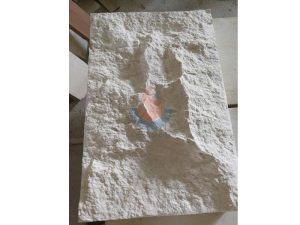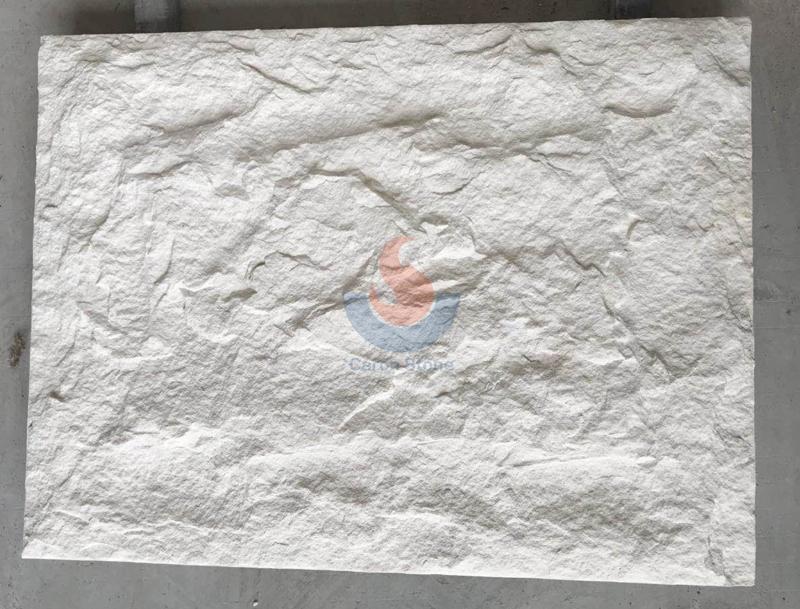In modern garden and architectural decoration, the use of stone is increasingly valued. Among them, white limestone has won the favor of designers with its elegant color and natural texture. Particularly when it is turned into split cultural stone, it exhibits unmatched aesthetic worth. White limestone split cultural stone can not only add a unique natural charm to the space, but also perfectly combine the ancient charm with modern design concepts. How then does white limestone cultural stone get split? Allow us to investigate this fascinating mechanism together!

White Limestone Splitted Culture stone
Detailed explanation of the process
Raw material selection and quarrying
The quality of limestone directly affects the effect of the final cultural stone. Consequently, first of all, one must choose premium white limestone raw materials. Usually extracted from stone mines, these raw materials are first inspected to guarantee absence of flaws and fissures. Key determinants in the choice include the limestone’s color, texture, and hardness.
Preliminary cutting
After selecting high-quality limestone raw materials, the next step is preliminary cutting. This stage aims to divide big blocks of stone into smaller slabs. Usually rectangular or square, these slabs set the stage for next processing. The initial cutting uses a large stone cutting machine that can accurately control the thickness and size of the cut.
Splitting
This step is the core process of making white limestone split cultural stone. Splitting the slab’s surface either manually or mechanically will help to create natural fissures and patterns. These patterns and fissures replicate the impact of natural weathering, therefore enhancing the rustic character of the cultural stone.
Mechanical splitting: Using a splitter or stone splitter, the slab is split by pressure. This approach has uniform splitting effect and can quickly treat a lot of stone.
Manual splitting: For cultural stones that require higher artistic effects, designers may choose manual splitting. Chisels and hammers will be used by craftspeople to split the slabs one by one so that every cultural stone has a different texture and look.
Trimming and polishing
Usually, the slab has some rough and erratic edges after the splitting operation. The cultural stone needs to be cut and polished if we are to guarantee its beauty and utility. This stage consists in cutting the slabs’ edges, eliminating sharp corners, and guaranteeing the safety of the cultural stone under usage. Moreover, grinding might improve the gloss of the slab and smooth its surface.
Cleaning and Inspection
The slabs have to be cleaned following cutting and grinding. The purpose of cleaning is to remove dust, dirt and other impurities on the surface of the slabs to ensure the cleanliness of the stone. Usually, cleaning the slabs completely employs a cleaning chemical or a high-pressure water gun. The workmanship’s quality then is tested to make sure every cultural stone’s size, texture, and surface treatment satisfy standards.
Packaging and Transportation
The white limestone split cultural stone can be packed and transported after the preceding procedure is finished. Usually shielded with foam or wooden frames, the slabs are kept free from damage during transit. When packaging, the specifications and quantity of the slabs also need to be marked to ensure that there will be no confusion when they are delivered to the customer.

Split face white limestone 30×15
White limestone split cultural stone is a procedure with great creativity and delicacy. From raw material choosing, initial cutting, splitting treatment to trimming and grinding, every link calls for exact technology and careful workmanship. Through these processes, limestone not only shows its natural texture and color, but also gives each piece of cultural stone a unique artistic atmosphere. White limestone split cultural stone can provide unmatched beautiful impacts to the space whether in building external walls, garden landscapes or interior decoration, so enabling us to experience the beauty of nature in modern design. Understanding these techniques helps us to appreciate the beauty of stone not only but also to grasp the manufacturing technique behind it.





